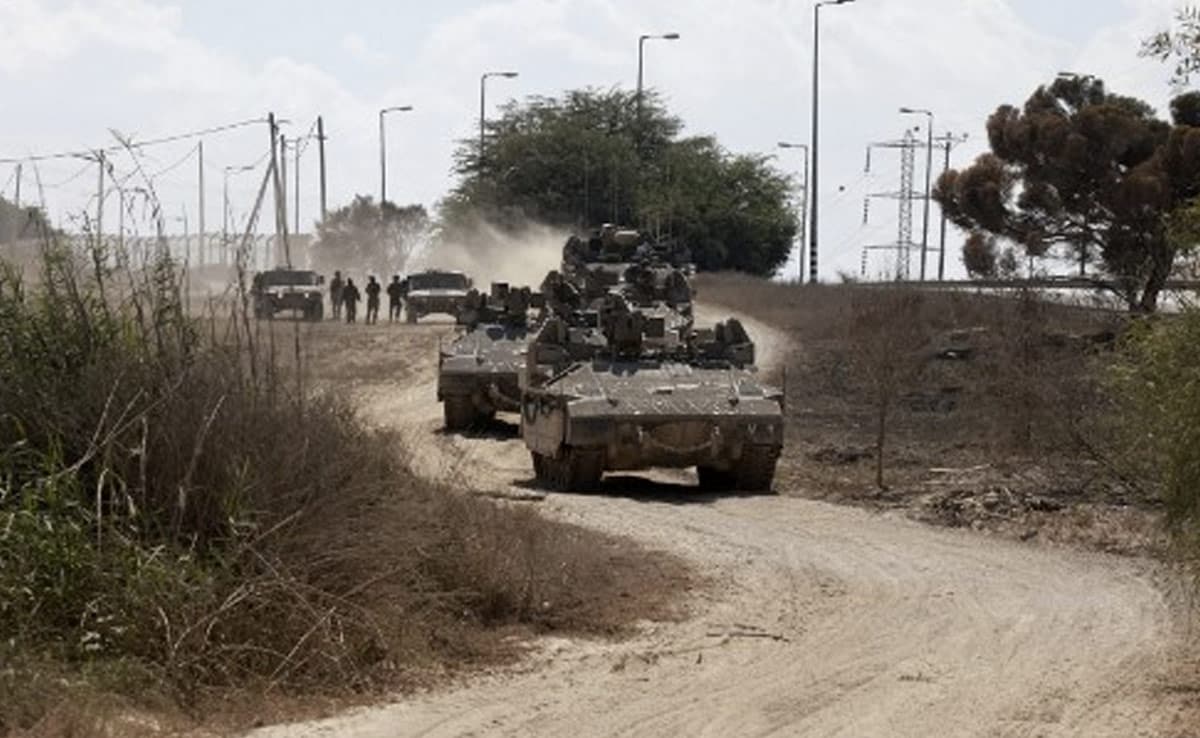
Israeli armoured vehicles advance towards the border with the Gaza Strip today.
Though Hamas is no match for the technological sophistication of the Israeli army, the group has one very unusual asset: a vast network of secret subterranean tunnels.
Since Israel began to grasp the full extent of the labyrinth in 2014, it has spent over $1 billion developing an underground barrier along its 60-kilometer border with the Gaza Strip, and hundreds of millions of dollars more on a system to detect the construction of new tunnels – measures it has dubbed the ‘Iron Wall’ and ‘Iron Spade.’
These defenses were meant to make its territory unimpregnable. But in at least one case, the hidden passageways were used to abet the cross-border attacks which last week killed 1,200 people, supplementing incursions by air, land and sea.
Now, as Israel signals an imminent ground invasion of Gaza, the same network is complicating its military retaliation – not least because Hamas, designated a terrorist organization by the US and the European Union, says it’s holding Israeli hostages in subterranean rooms.
“Think of the Gaza Strip as one layer for civilians and then another layer for Hamas,” said Jonathan Conricus, a spokesman for the Israeli Defense Forces. “We are trying to get to that second layer that Hamas has built.”
Targeting the underground maze will not be easy. Past attempts have been hampered by the fact that no one but Hamas knows their full extent.
In 2021, Israel said it had destroyed 100 kilometers of tunnels underneath Gaza. But Hamas insisted it had a network of 500 kilometers, of which only 5% was hit.
In a bid to gain the edge over its foe, Israel in 2014 decided to invest in a sophisticated tunnel-detection system developed by Israeli firms Elbit Systems and Rafael Advanced Defense Systems, the two contractors who also jointly worked on the missile defense system known as Iron Dome.
But the sensors aren’t foolproof as they can’t detect tunnels that turn and get confused by intersections, according to research by the Tel Aviv-based Institute for National Studies.
“Despite advancing technological countermeasures, tunneling remains a very effective way for one side to literally undermine another’s dominance of the surface,” said Scott Savitz, a military expert at the Rand Corporation. The opposing side “never knows whether tunnels exist, how many there are, or where they are. They only know the ones that they found.”
Hamas for years has made use of the tunnels under the densely-populated Gaza to conceal weapons, command facilities and fighters.
Over time, the passageways have become more sophisticated with ventilation shafts and electricity.
Some reach a depth of 35 meters and can even be equipped with railroad tracks and communication rooms, according to experts. The entrance to them often lies in residential buildings or other public facilities.
At first, the subterranean network was intended mainly to smuggle goods and weapons from Egypt into the narrow strip of land that Israel withdrew from in 2005.
But militants also used it for cross-border raids, including the operation in 2006 in which they kidnapped Israeli soldier Gilad Shalit, then aged 19, killing two other Israeli soldiers. Shalit was released five years later in return for Israel freeing more than 1,000 Palestinian prisoners.
Israel staged a ground offensive in Gaza in 2014 in a bid to get rid of the underground labyrinth, which Hamas militants had used to ambush Israeli forces during the 50-day war.
Egypt also clamped down starting about a decade ago through a coordinated campaign to destroy the tunnels, including by flooding them.
Using robots to explore the tunnel complex can reduce risks. But, Savitz warned, due to confined spaces, booby traps and other defenses, and defenders’ greater knowledge of the underground environment, Israeli troops who try to enter them will be at a “a severe disadvantage.”
(Except for the headline, this story has not been edited by NDTV staff and is published from a syndicated feed.)




